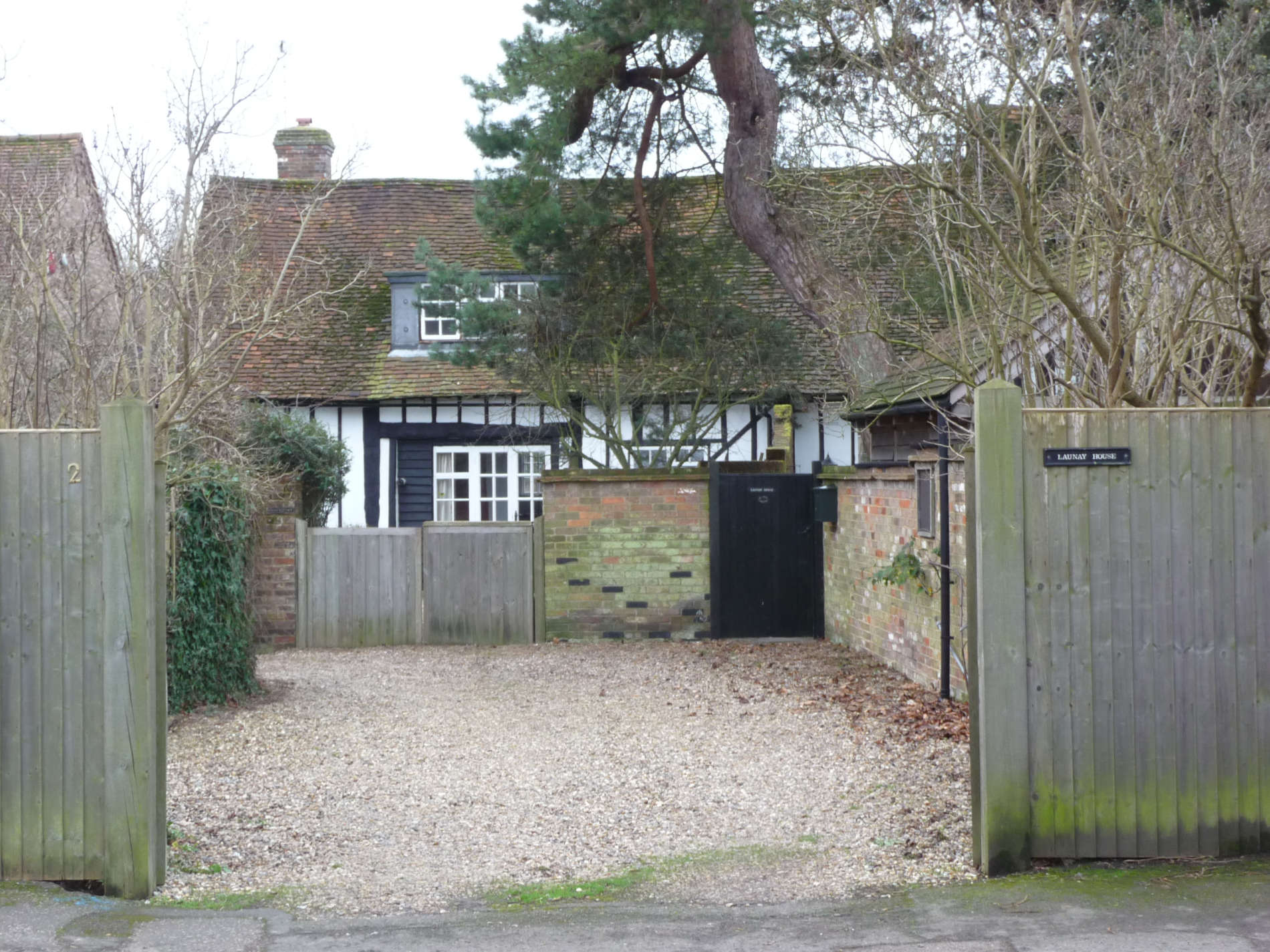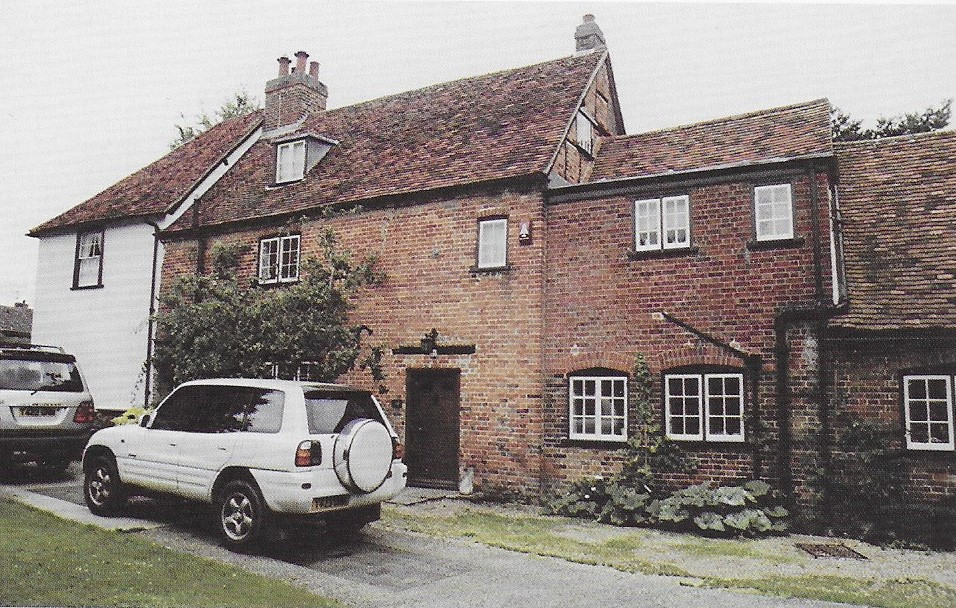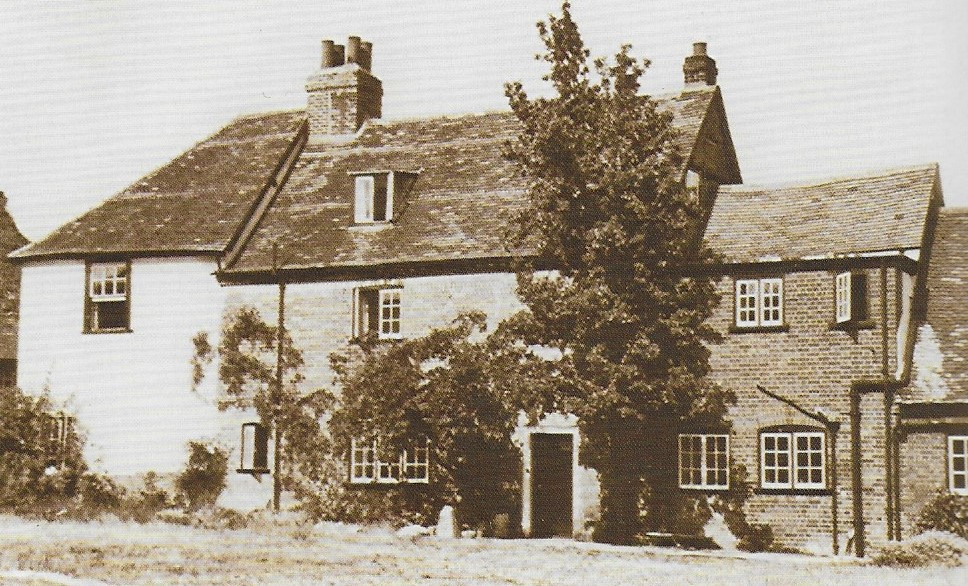Fish St. Farm (Launay House)
Fish Street leads from the High Street to the Common. On the south side is Fish Street Farm the house is called Launay House and beside it is Pound Cottage.



The back of the buildings look out onto what would have constituted the farmyard. Here was a big barn, and a milking parlour. The main house is connected to Pound Cottage a former barn. Both are Grade II listed. The farmhouse is a 17th century or earlier timber framed building. In the early 19th century, it was cased in red brick and stuccoed. There are two storeys, an attic, a cellar and a large ridge chimney stack at the Eastern end. On the eastern side of the house is a small timber framed bay which has also been fronted with brick. The barn is also timber framed still exposed, and has two windows and box dormers.
There has been much debate as to the actual location of the Priory, as the site was lost at the time of the Dissolution. The two burial mounds on the Common, dug by the monks in 1178, to find the reputed remains of Amphibalus, destroyed any physical remains. Indeed those remains are more likely to have been the graves contained in barrows or graves of Saxons (a chieftain and followers) as they included knives or spearheads. A Saxon spearhead was found in the churchyard in 1907, probably reburied there after the Dissolution. The first chapel on the site was built on the site as a way of sanctifying a pagan site. It was dedicated to St James, probably as a stop for pilgrims on their way to the shrine of St Alban. According to Matthew Paris (1200-1259) a Benedictine monk, chronicler, artist of illuminated manuscripts and cartographer who was based at St Albans Abbey, the site lay about three miles from the gates of the Abbey, on grassland, on a slight slope. This description fits in with the site of Fish Street Farm and its land of 33 acres including Amphibals Mead and fields that has ‘park’ in their names. These could have been the area of the Priory enclosure. During the building of the Park Estate in 1966/7 ecclesiastical stonework of the 12th to 15th centuries was found. This is likely to have been reused in the building of Place House by Richard Reade. The exact siting of this has also caused much debate. Generally now, it is thought that the farmhouse of Fish Street Farm is the location of the main Priory chapel. Indeed it is orientated East/West as most churches are. Detailed examination of the existing building might shed more light on this theory. In a survey of 1696, there is reference to ‘that capital messsauge (a dwelling house with outbuildings and land assigned to its use.) called St. Affables Chapel, alias St James Chapel, most commonly called Fish Street Farm’
At the Dissolution, the Priory was valued at £9.2s. 0d, it had 20 acres of pasture. In 1540, John Cocks of Broxbourne and his wife Eleanor became Tenants in chief to the king for the land for £240.7s 6d. Payment was for the house and site of the Priory and two manors called the Priory of Redbourn (St Amphibalus) and Beymonds. The document was signed by Thomas Cromwell. In 1558, John sold the Priory manor to his son, Richard Rede. Innocent inherited it around 1568 and when he died in 1597 he left it to his son, Richard. It was sold to William Cavendish in 1614, who passed it onto Thomas Saunders in 1628. By 1637 it was in the hands of William Beaumont. In 1645 Thomas Sells, yeoman, granted a tenement called St Affables alias St James Chapel and premises to his son Francis Sells. By 1651 it belonged to the Gorhambury estate. The Bacon family in the person of Dame Jane Bacon leased the farm to John Chambers for 21 years at £90p.a. He was listed as a wheelwright. It consisted of 167 acres. This lease was renewed in 1654 for 18 years at £91 p.a. and it now totalled 169 acres. Renewed again in 1655 for 17 years, for £101p.a. This was the basis of the farm. It consisted of Church Field-27 acres, Wyatts Field – four acres, Great Bury Field 25 acres, Little Bury field -19 acres, Dell Field -26 acres, Meadshott-26 acres, Parks Fields – 14 acres of arable and 16 acres of pasture, Park Meades -12 acres, Affables Mead – one acre – a total of 170 acres. In 1669, Grimston leased the farm to Edward Wethered for 21 years at £135.10s p.a. It now totalled 191 acres as 10 acres of former Parkland had been bought, along with Dawes Meadow, Quicksies – a small holding of eight acres and an alehouse on the road which had a one acre meadow. Daniel Kelsey was held a 21 year lease from 1683, but it passed to Thomas Olive part way through that lease. By 1699 it was being referred to as Fish Street Farm. William Reading was given a five year lease in 1699 at £115p.a The Reading family stayed on at the farm but in 1734 Hannah Reading was the leaseholder. By 1758, the leaseholder was Edward Basil and by 1806 it was in the will of William Kent. When it was surveyed in 1821, it was noted that ‘ the buildings consist of a dwelling house of brick and tile, a wheat barn, barley barn, oat barn and a pea barn , all timber and tile. A cowhouse-carthorse stable, timber and thatch, a six stall stable with granary over brick and tile.’ All were in need of repair. In the 1851 census the farm had about 80 acres. It is likely that some land had been transferred to Beaumont Hall occupied by George Webb as it had 486 acres.